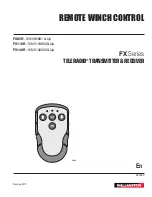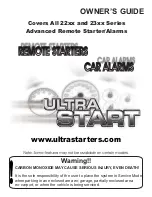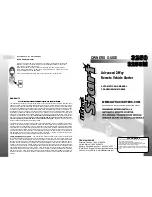
Information SET-02
33
DIGITAL plus
A
To delete the locomotive from
the MU irreversibly, press the
"A " key a second time.
Now the multiple multi unit address is displayed again. When you
have deleted the last locomotive address from the MU, the MU
itself is deleted and the next locomotive address in the queue will be
displayed on the LH200 display.
11.8 Managing the LH200 MU memory
In addition to the stack the LH200 command station also stores
information on each consist in the MU-memory. In this memory are
stored the locomotive addresses which are within the MU. There is
a 24 locomotive addresses limit in this MU-memory. You can divide
this memory in a very flexible way:
You can set up to 12 multi units. 24 locomotives can be distributed
to them in an fashion. The number of multi units possible therefore
depends entirely on the sum of locomotives in any single MU.
Possible combinations are for example:
Number
of
Number
of
Number
of
Number
of
Number
of
Number
of
Number
of
Number
of
MUs
locomo-
tives
MUs
locomo-
tives
MUs
locomo-
tives
MUs
locomo-
tives
1
12
1
12
1
3
1
3
2
12
2
6
2
5
2
5
3
6
3
7
3
4
4
9
4
6
5
6
11.9 Preconditions for multi unit operation
SET-02 Multi units operation utilizes a decoder feature called
advanced consisting. For a locomotive to be able to be placed in a
LH200 MU the decoder must have this feature. All DIGITAL plus
locomotive decoders, that were built to conform to the NMRA
standards have this feature. Many other decoders from other
manufacturers also have advanced consisting. If in doubt check
your decoder instructions.
One legacy decoder, that does not support advanced consisting,
can be added to a multi unit. To do this simply assign the MU
address to be the same as the locomotive address of the legacy
decoder.
Multi unit operation only operates in 28 address speed mode.
Locomotive decoders have to be set to operation with 28
Throttle positions
before being added to a consist.
















































